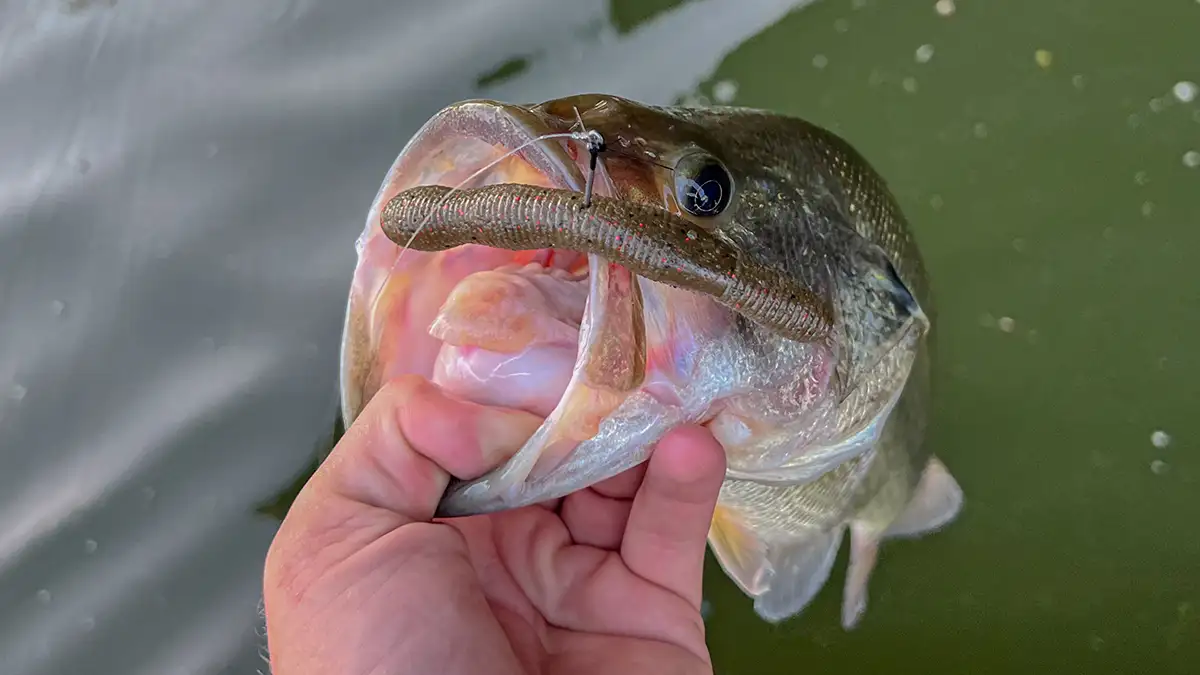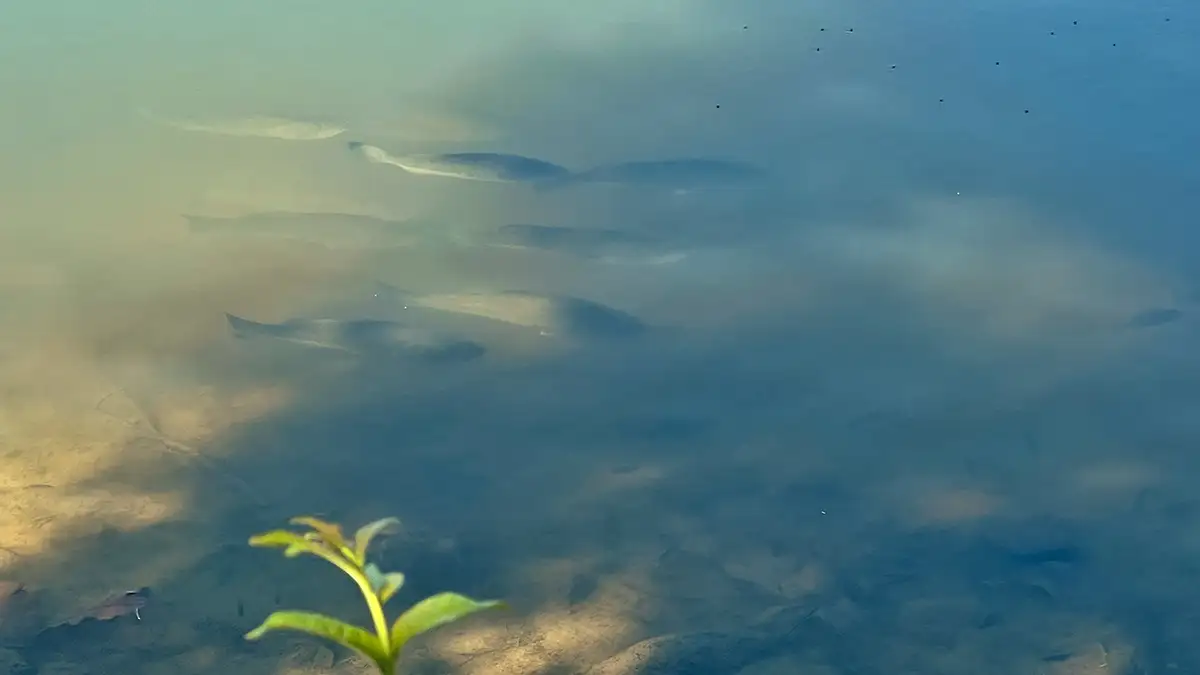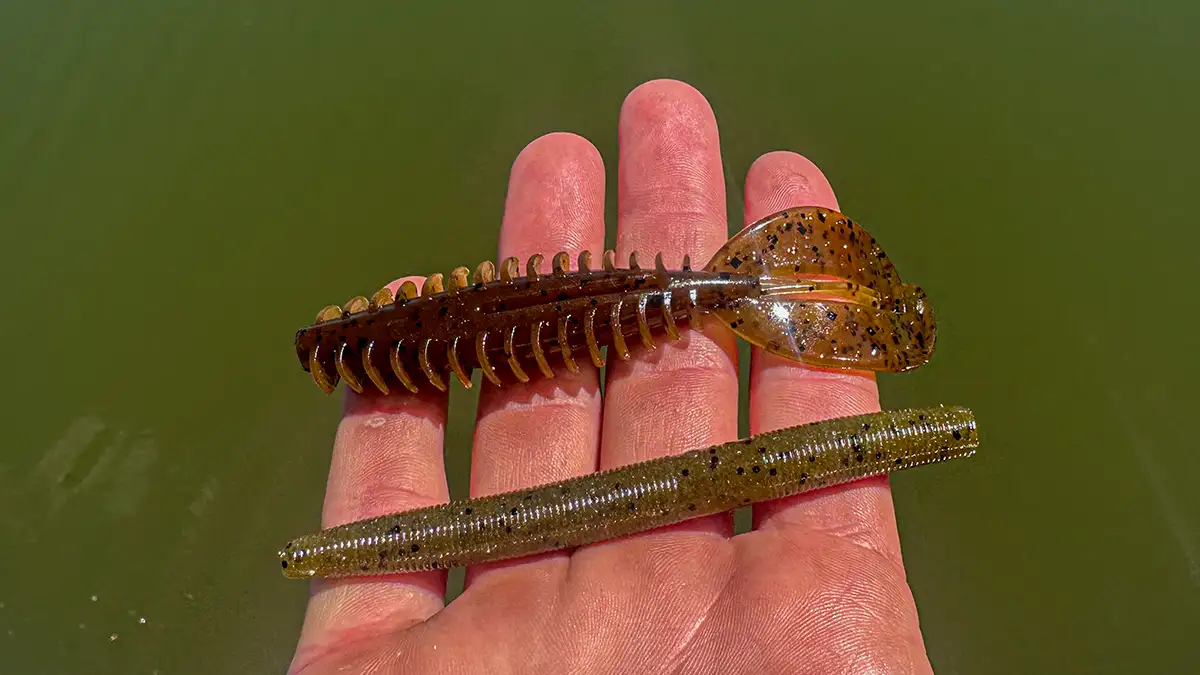Warning: Undefined variable $k in /home/nginx/domains/wired2fishcom.bigscoots-staging.com/public/wp-content/themes/understrap-child-0.6.0/functions.php on line 984
Warning: Undefined variable $k in /home/nginx/domains/wired2fishcom.bigscoots-staging.com/public/wp-content/themes/understrap-child-0.6.0/functions.php on line 987
Spring time is without a doubt my favorite time to fish. There are so many ways to catch bass this time of year, it’s hard to not love spending time on the water. One of the biggest reason I look forward to this time of year is the bass spawn. Every year we get a short window where bass cover the bank looking to make beds and spawn. This is often when the biggest fish of the year get caught, and it allows for some fantastic sight fishing opportunities. Catching bass off bed can be easy at times, however they don’t always want to cooperate. Over the last several years of fishing I’ve learned several nuances that have helped me find success in this area. Some of these tricks are new and some are old, but I wanted to take this opportunity to share what I’ve learned.

THE BASICS
The first step to catching bass of bed is locating them. This can be easy or difficult depending on how many fish in your lake are spawning. Bass tend to spawn in waves that often correlate to the current weather conditions. The first wave of spawning fish typically occur once the water temperature reaches the low 60’s. Moon phases and fluctuation water levels play a big roll in this as well. Fish tend to spawn best around a full moon, often causing them to move up overnight. High water level is another factor that bring spawning fish. This allows fish to move up shallow and find protected water to lay their eggs. Fluctuating water levels however can be detrimental to the bass spawn, often leaving beds high and dry when the water drops. This can push fish off the bank causing them to wait until the next heat wave or rise in water level to spawn.
Finding a bed is the next piece of the puzzle. These beds are often located next to shallow cover in protected areas of the lake. Shallow pockets and coves are your best bet for quickly locating a bed. Using good polarized glasses is essential for cutting out glare and locating hard to see beds. Pollen is another factor that can limit your visibility when looking for beds. One good trick to eliminate this issue is bringing a spray bottle with a mix of water and Dawn dish soap. Spraying this on the water will quickly clear out any floating sediment, greatly increasing your visibility.

READING THE FISH
The next step in putting these fish in the boat is getting them to bite. This is typically the most difficult step in the process and often requires a little bit of patience and finesse. While there are times the fish will eat first cast, they often require a bit of work before they are ready to commit. The best way to become proficient in catching fish off bed is understanding how they act. The male is in charge of making the bed, he is often the smaller of the two fish and easiest to catch. The male will sit and wait for a female to come and lay her eggs, which are then fertilized by the male. Females will leave the nest early, leaving the male to guard the eggs from any potential predators such as bluegill or perch.
This gives you a short window to catch the larger female bass. The female is easiest to catch right after she lays her eggs. She will typically stick around the bed for a few days helping the male protect their eggs. Paying attention to how these fish act are crucial for getting them to bite. The closer the female sits to the bed the more likely she is too bite. If she refuses to leave the bed for more than a few seconds, you can almost always aggravate her into biting. Another important note is to not catch the male if the female is present. This can often spook her away greatly decreasing your chances at catching her.
There are times however when catching the male can help you get the female to bite. If the female refuses to lock on the bed, catching the male can sometimes cause her to move up and protect the bed. I typically pay attention to how frequently the female comes back to the bed. If she takes more than a few minutes to reposition on the bed after leaving, I’ll typically go ahead and catch the male. If she only takes a few seconds however, I’ll leave the male be and focus on getting the female to bite. I’ll often give a bed fish up to 45 minutes before I write it off and move on. Your best chance at catching the female is when she’s locked on bed and there’s no male present. In a tournament situation I tend to start on these type of fish. You can often catch them on your first couple casts, allowing you to put a few fish in the live well before transitioning to more finicky fish later in the day.

USING YOUR ELECTRONICS
Traditionally bed fishing has always consisted of sight fishing. While this is still an extremely productive way to catch giant bass, advances in electronics have allowed us to target beds we can’t see with our eyes. One of the most recent examples of this was Scott Martin’s 3rd place finish in the Bassmaster Open at Santee Cooper. Scott was targeting bed fish in deeper water using forward facing sonar in perspective mode. This allowed him to target beds in deep water that were overlooked by most anglers. I’ve spent the last several weeks practicing this technique on my local fisheries, and I’ve been extremely impressed with what I’ve seen.
Perspective mode gives you a detailed live image of what’s going on beneath the surface, revealing beds that would otherwise go unnoticed. Not only can you see the beds, but you can see fish swimming around them. While this may seem like an easy way to catch boatloads of fish, it’s still fairly difficult. These electronics work best in about 2 to 8 feet of water, and determining size is still fairly difficult. I was able to get a few bites by keeping my distance and making long casts at both bedding fish and cruisers. However I struggled to determine size like I can when seeing them with my eyes. This makes picking and choosing quality sized fish far more difficult than when they’re on the bank. While these electronics aren’t necessary to catch bedding fish, I found it to be a fun new way to capitalize on some springtime spawning fish that other anglers might miss.

BAIT SELECTION
Bait selection is another important factor when targeting fish on bed. I tend to keep my options fairly simple, mainly rotating between three basic baits. These three baits consist of a wacky rigged stick bait, Texas rigged creature bait and a larger sized swimbait. I generally start out using a wacky rigged stick bait such as the 5-inch Yamamoto Senko. This bait is non intrusive and perfect for making long accurate casts at finicky fish. I like to cast a few feet past the bed, then slowly work it into the strike zone. After making a few casts with the Senko, I’ll then switch over to a Texas rig. One of my favorite baits to use in this scenario is a white Zoom Z-Craw Jr. I’ll make repetitive casts into the bed trying to aggravate the fish into biting. Keeping your bait stationary in the bed and shaking your rod vigorously is a great way to get these fish to react.
While the wacky and Texas rig are often my go-to baits, I try and use a big swimbait when applicable. This is a great option for aggressive bed fish that are actively defending their nest. Much like the wacky rig I’ll make a cast past then bed, then slowly wind the bait into the strike zone. One of my favorite baits for this application is the 6-inch Berkley Cull Shad. This approach is great for quickly covering water and hitting lots of different locations throughout the day. I’ll often only make two or three casts on a bed with this lure before switching to a more finesse approach. However, when they decide to bite this bait the strike is often ferocious.
Catching bass on bed is some of the most fun an angler can have. Not only is this a productive way to fish, but it’s a fantastic way to catch some true giants. Bed fishing is truly an art, and paying attention to the subtle nuances is key to finding success in this arena. We only get a short window to catch bass during the spawn, and there’s no better time than now to capitalize on this bite. Whether you’re new to bed fishing or a seasoned veteran, these tips will help you put more fish in the boat this spring.












